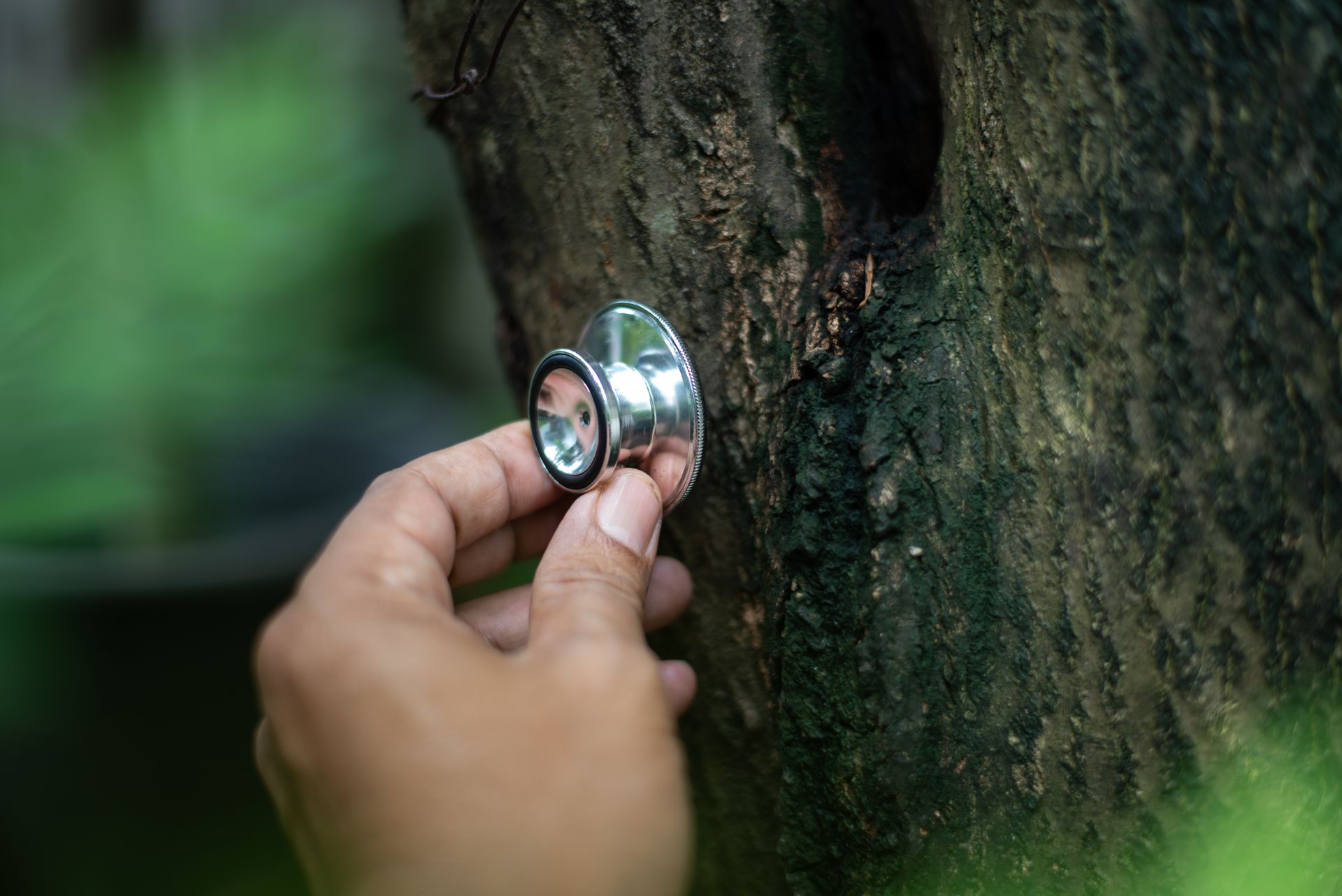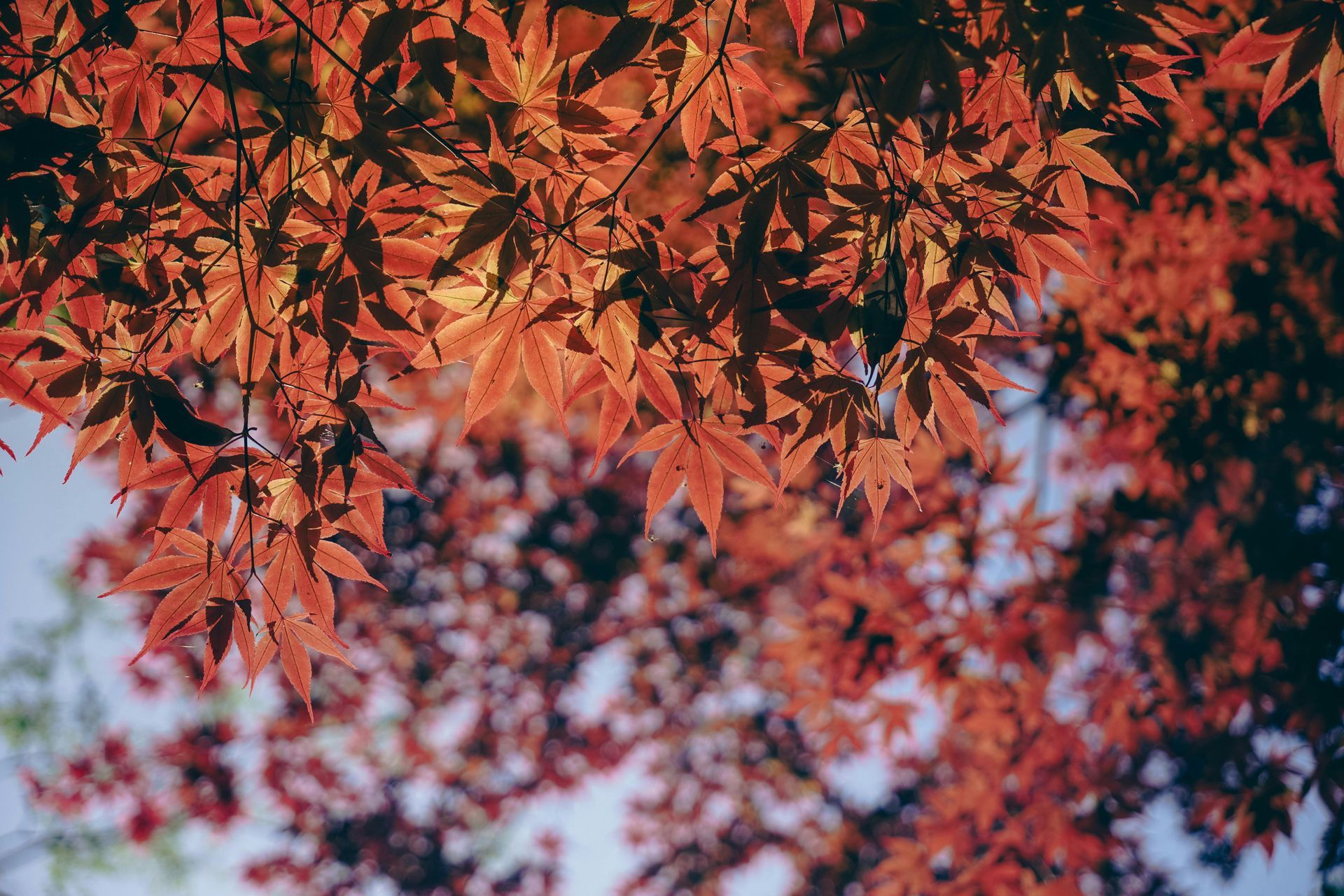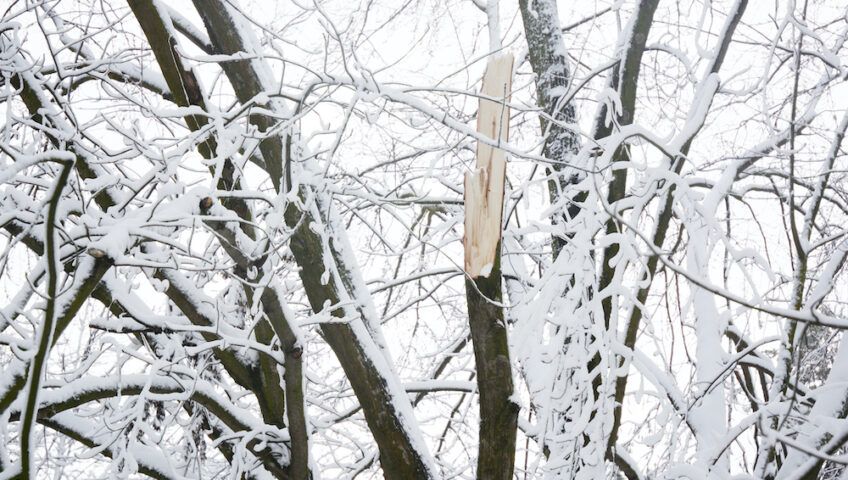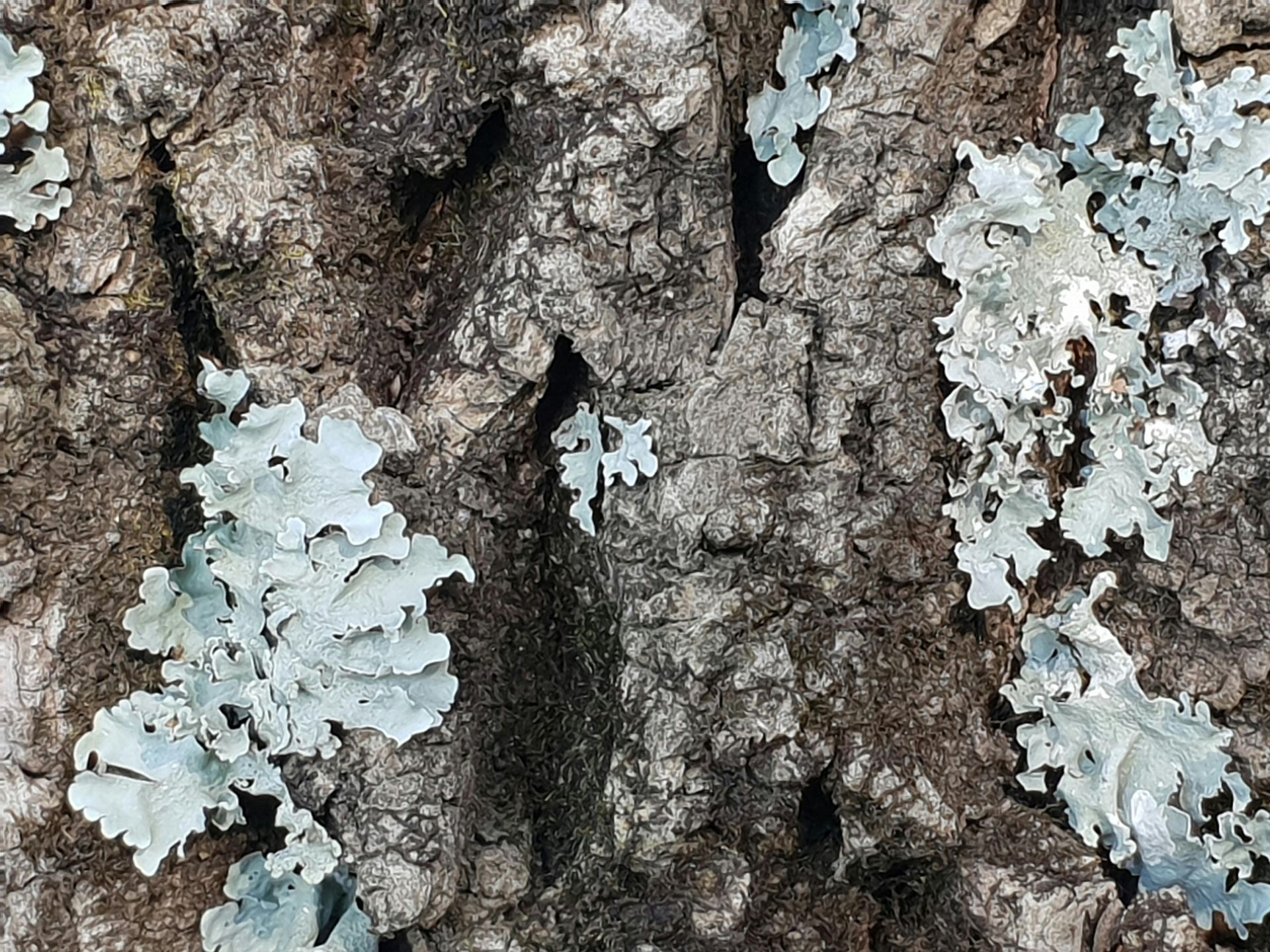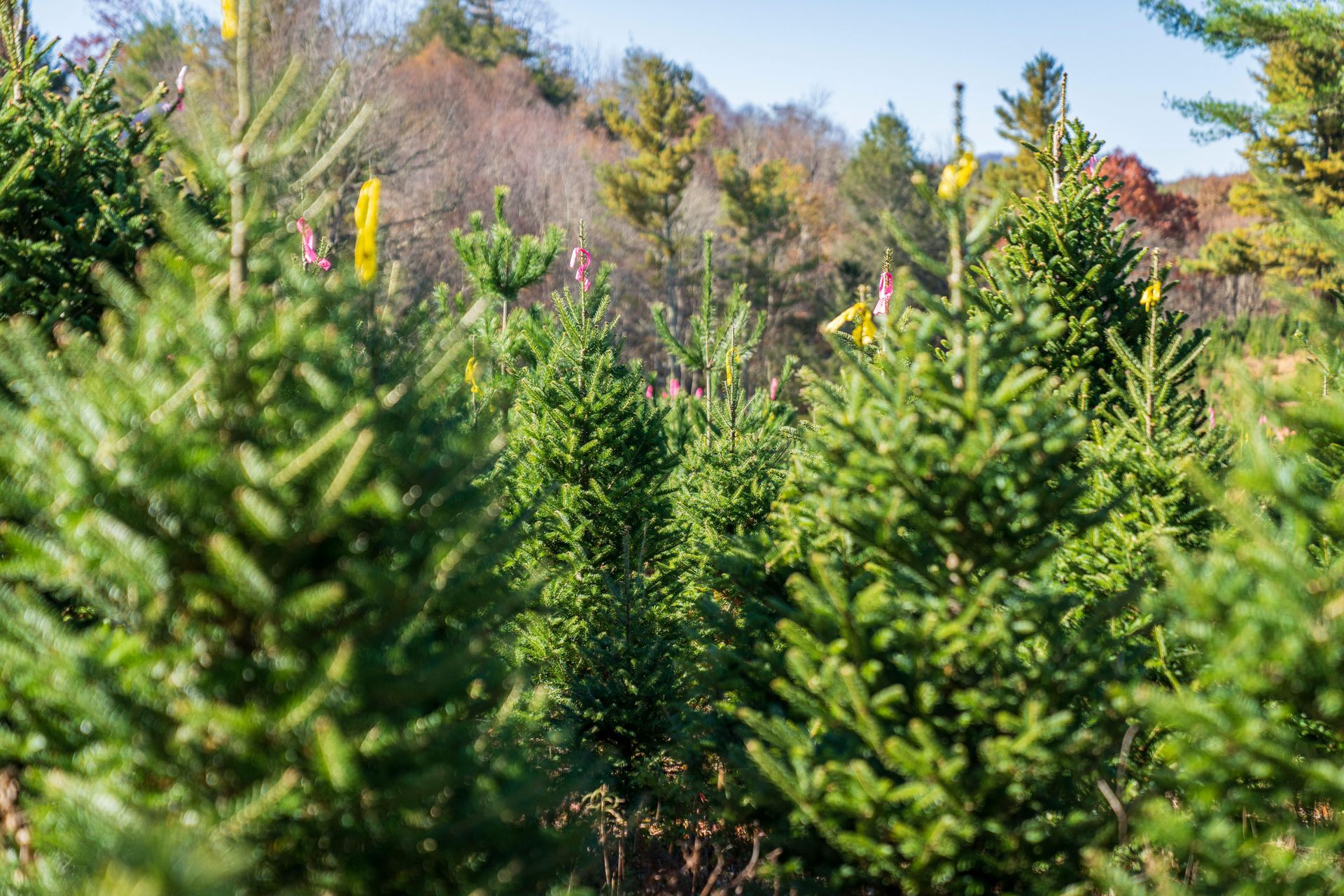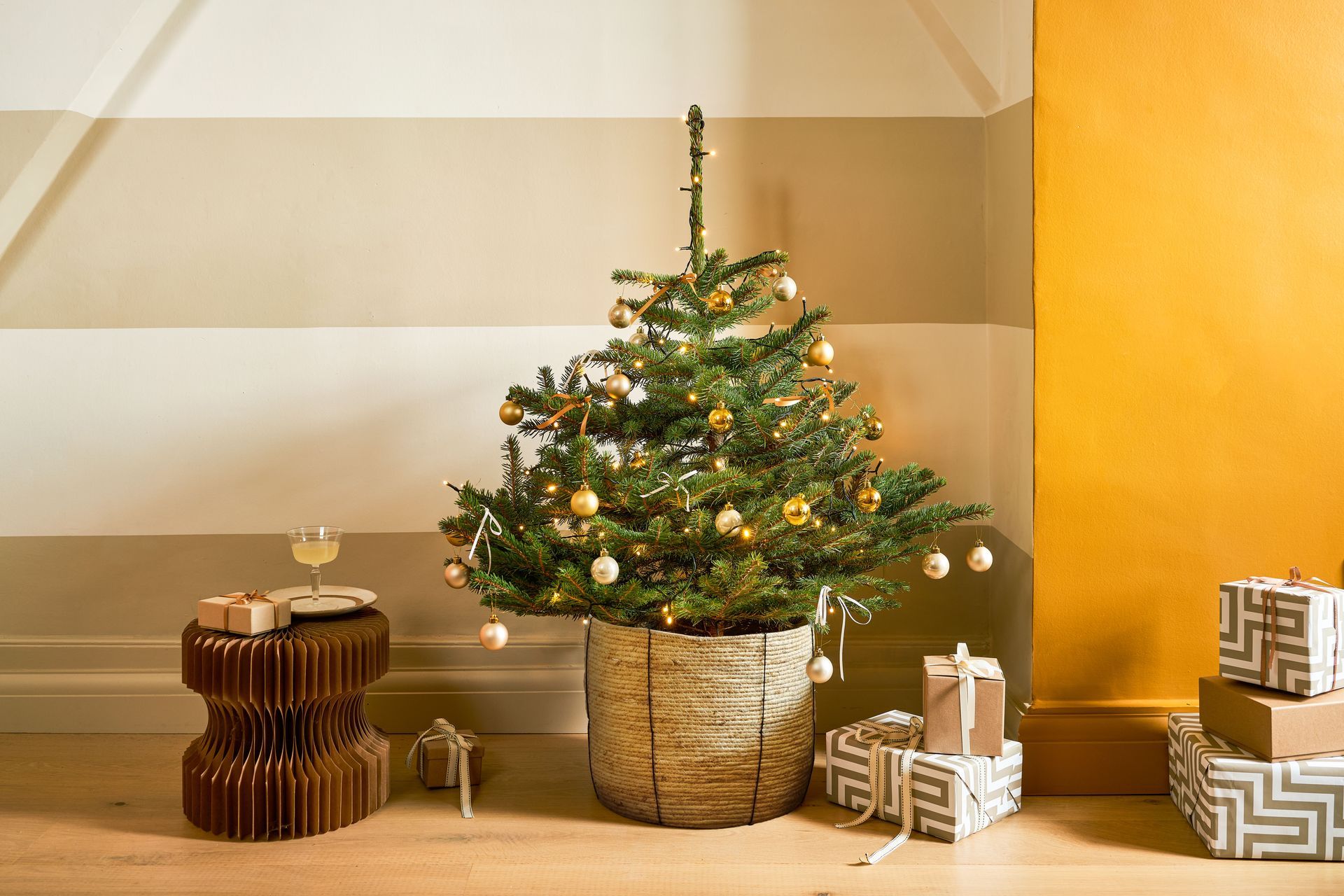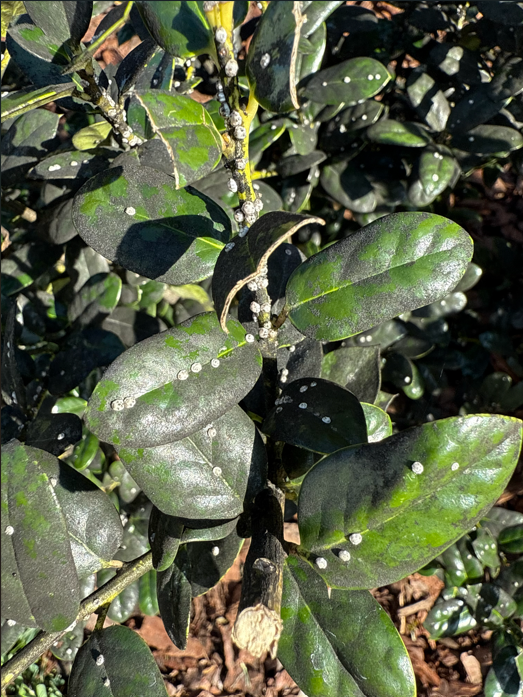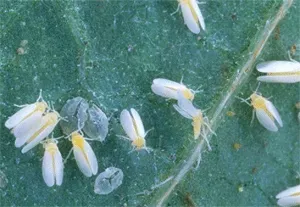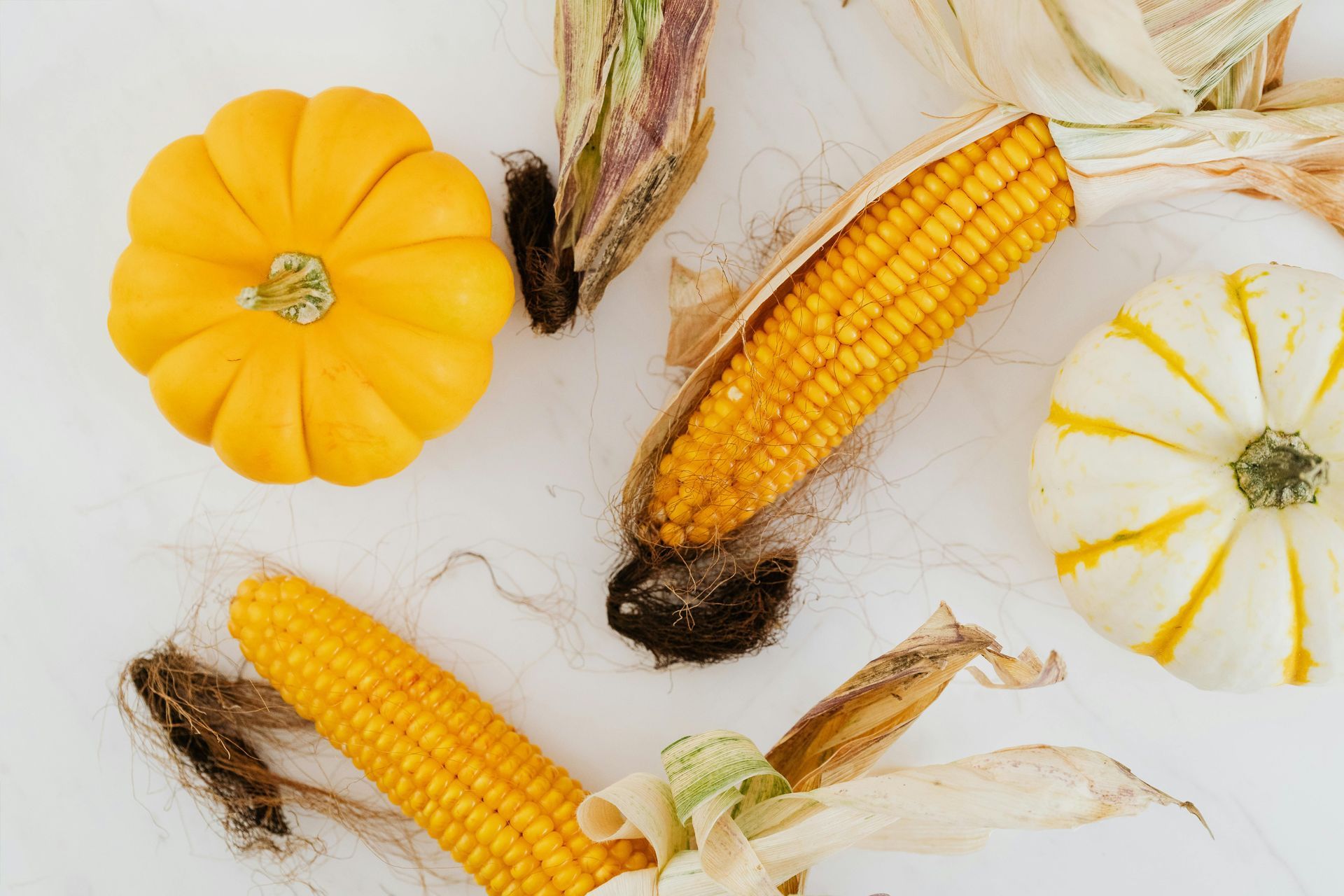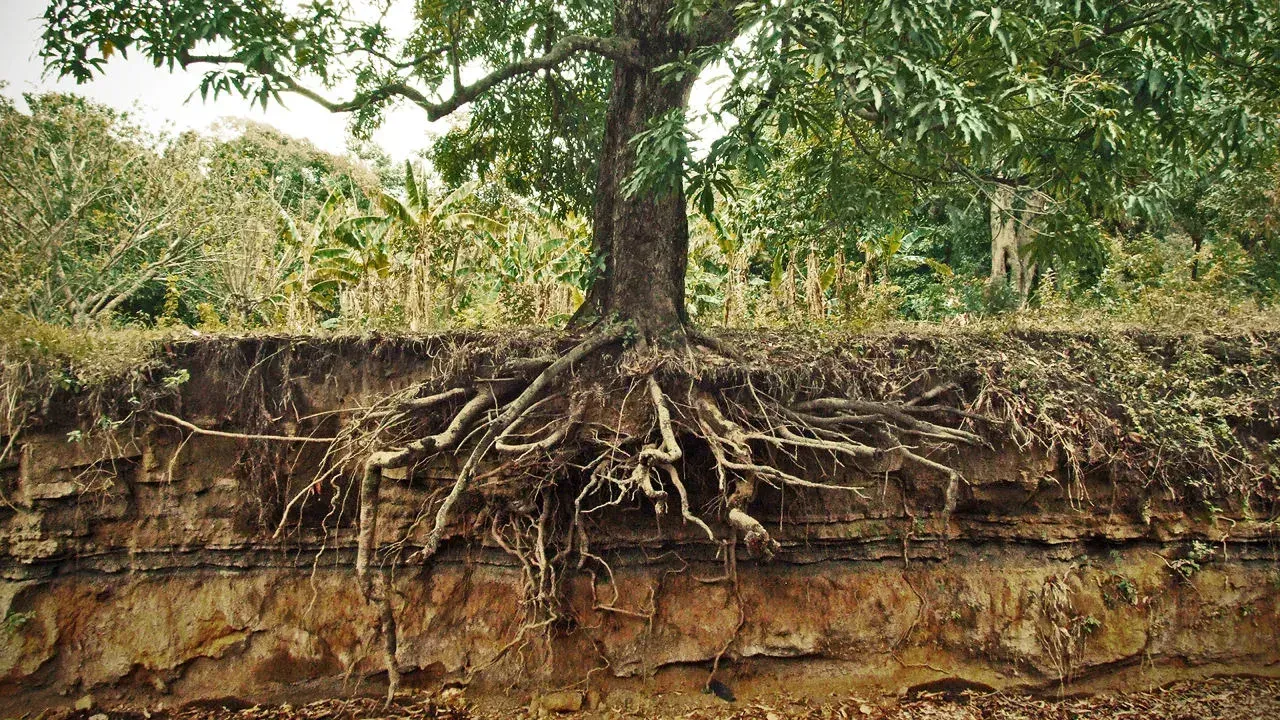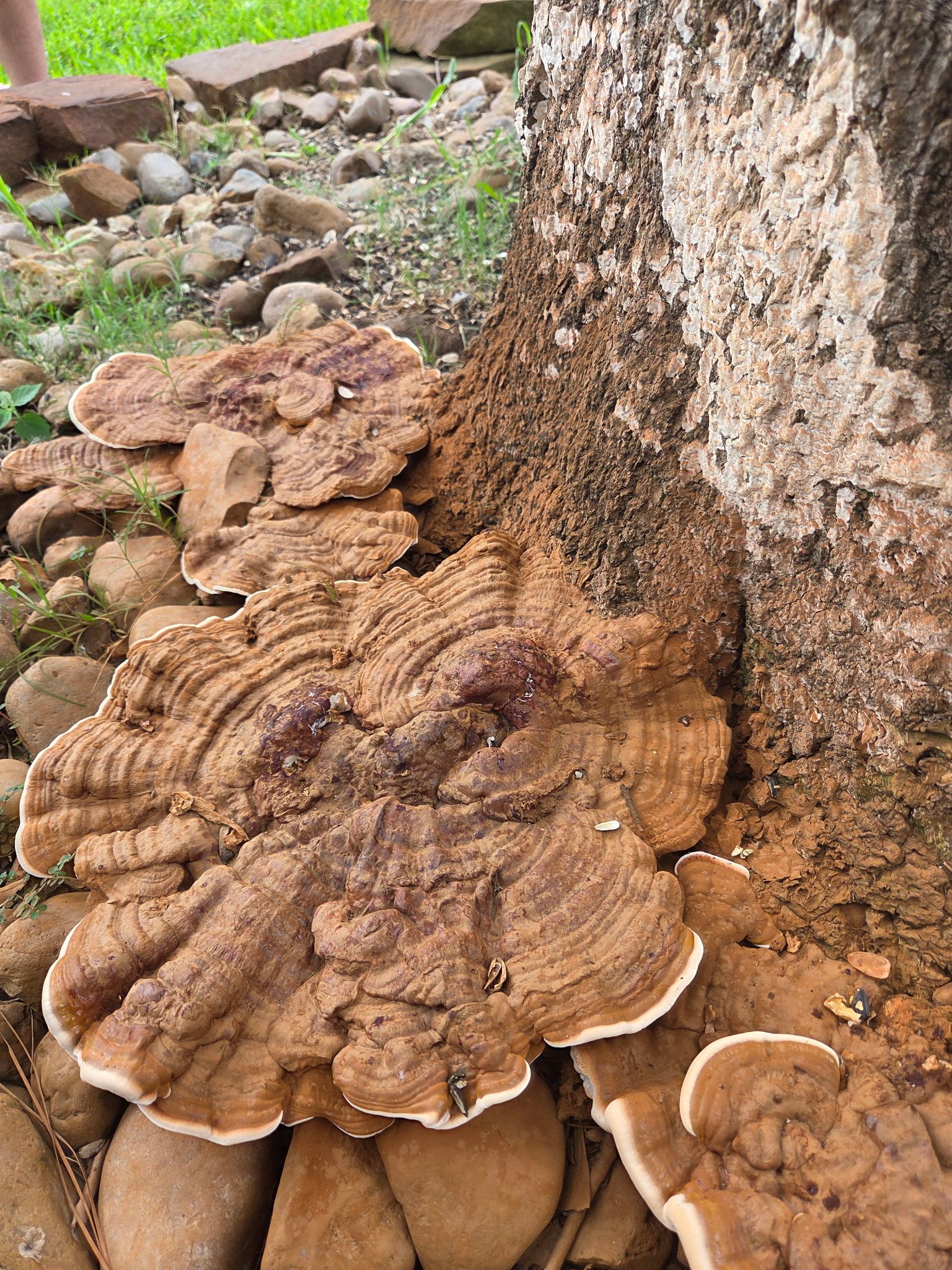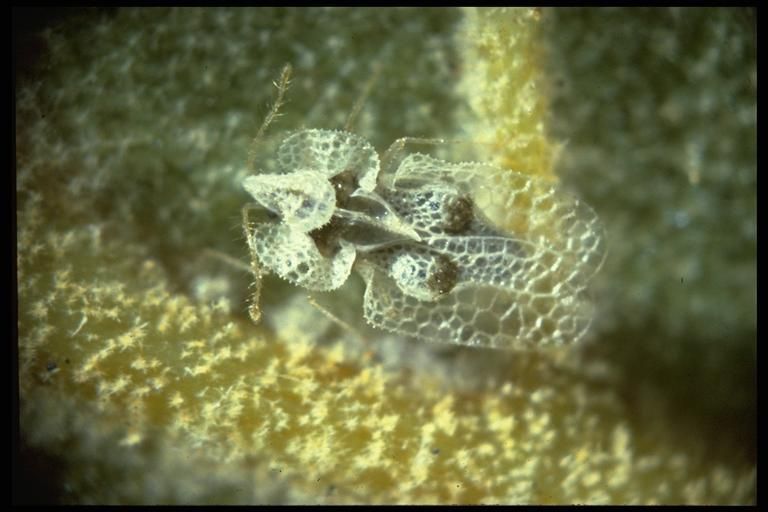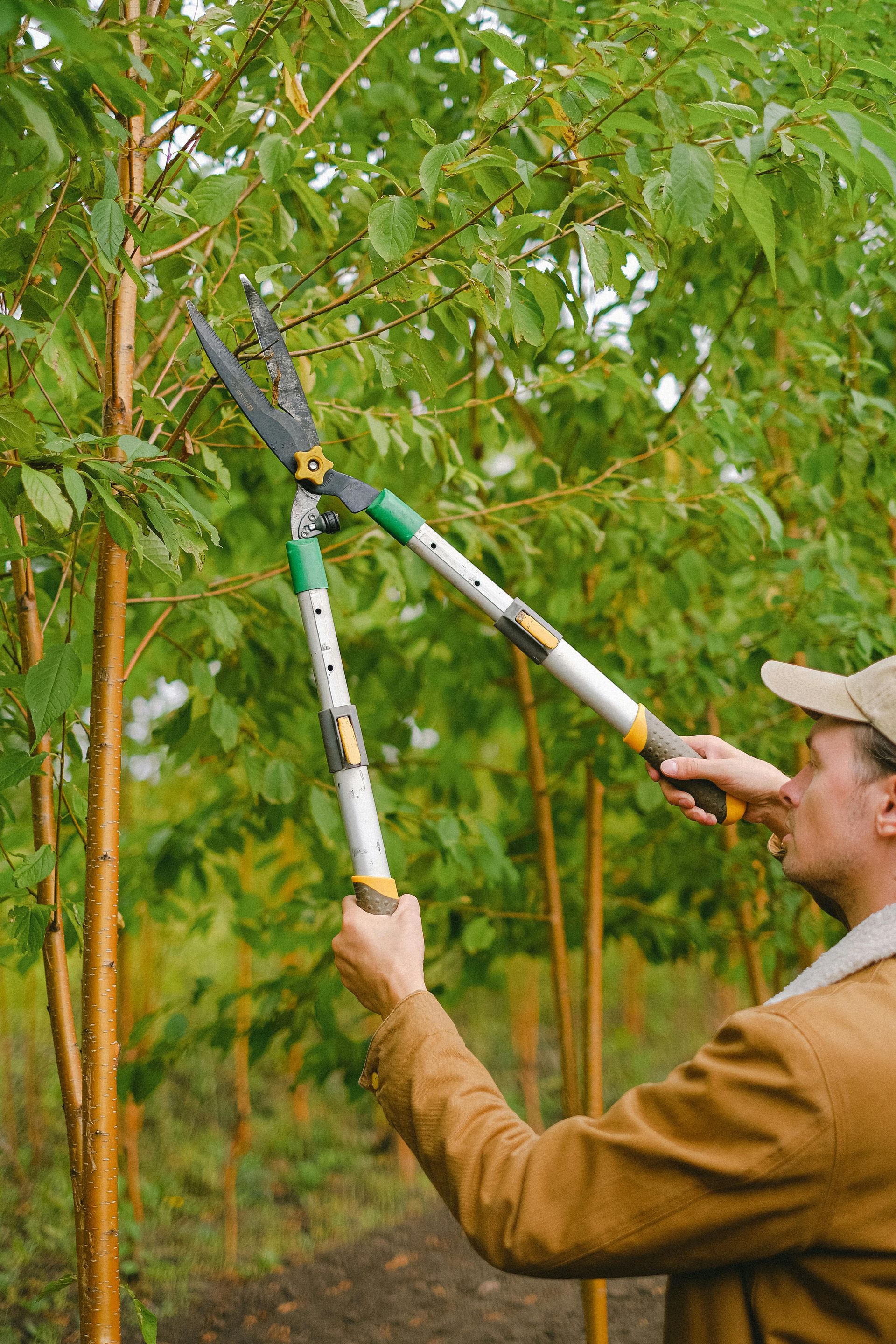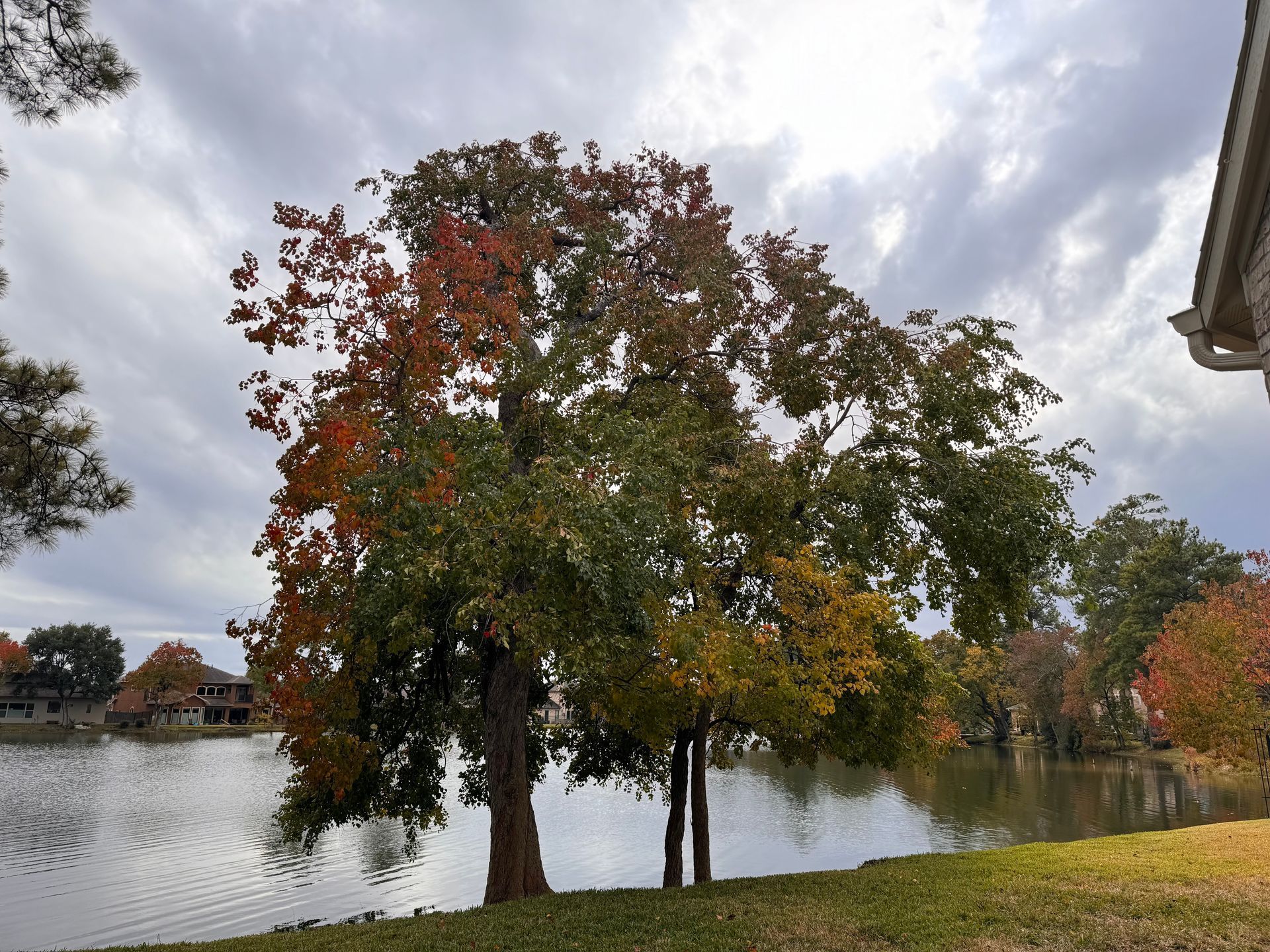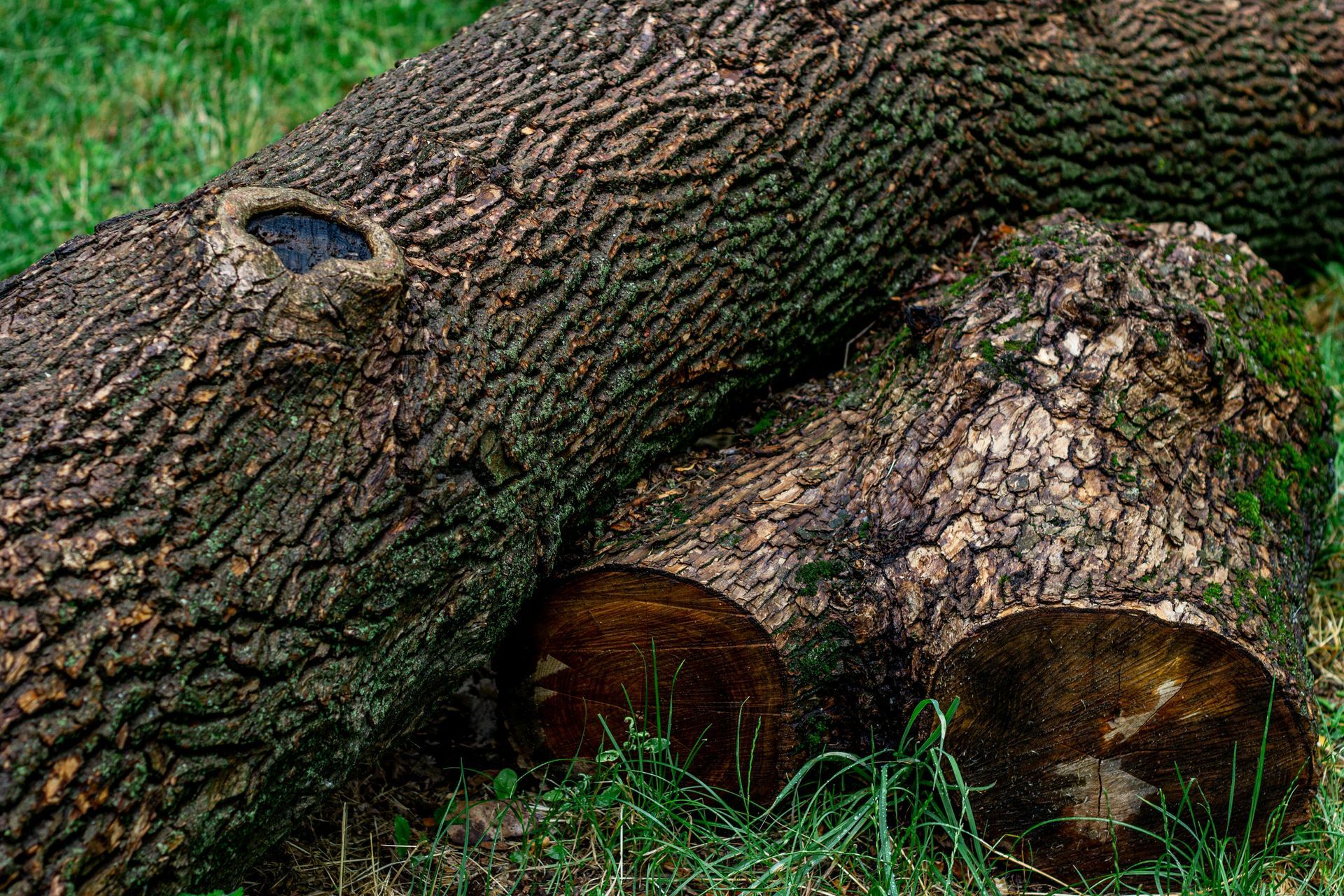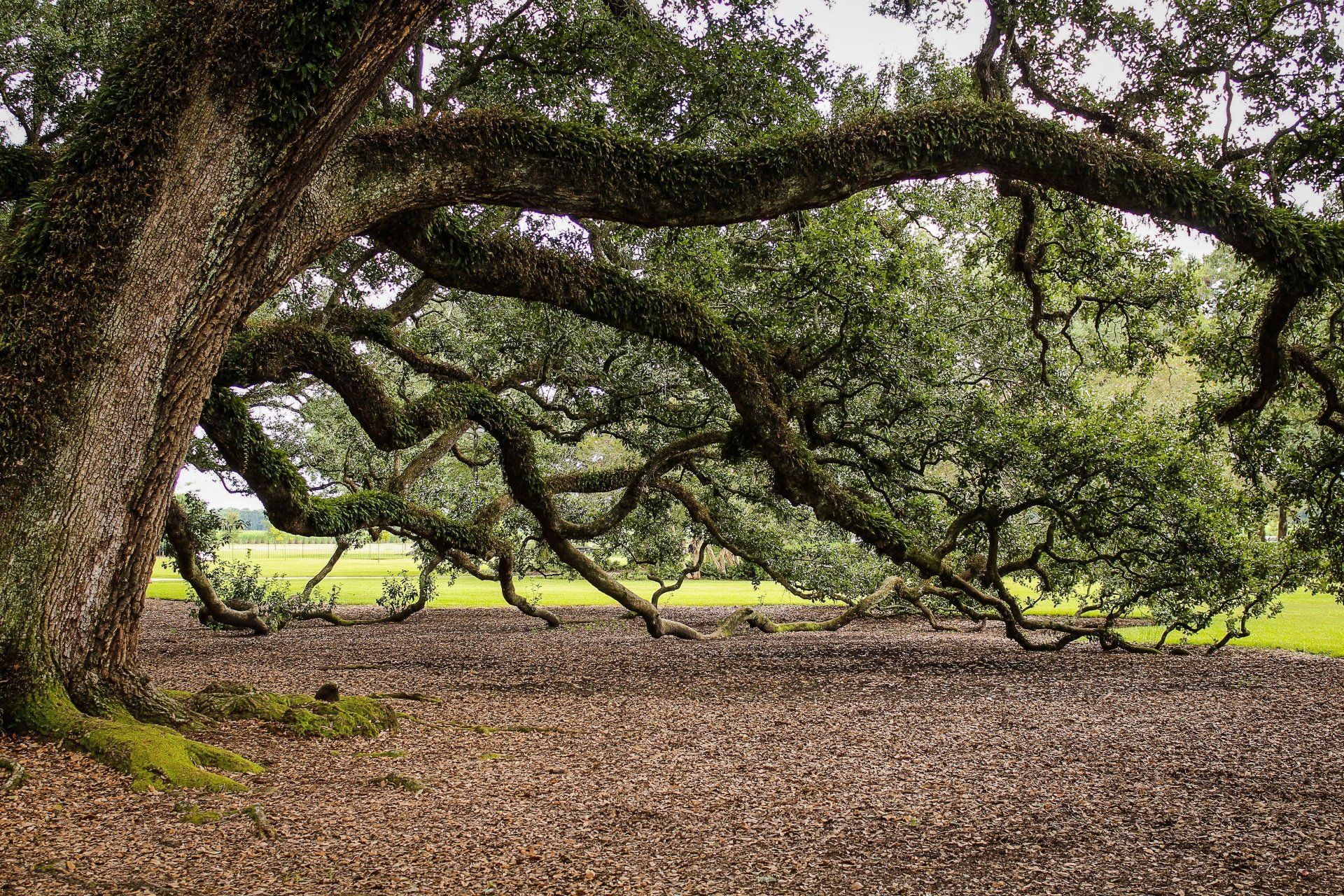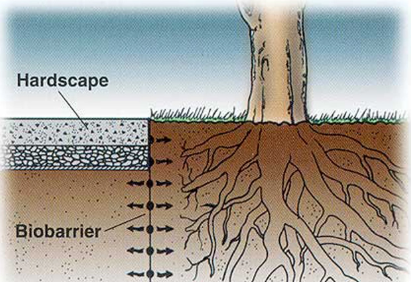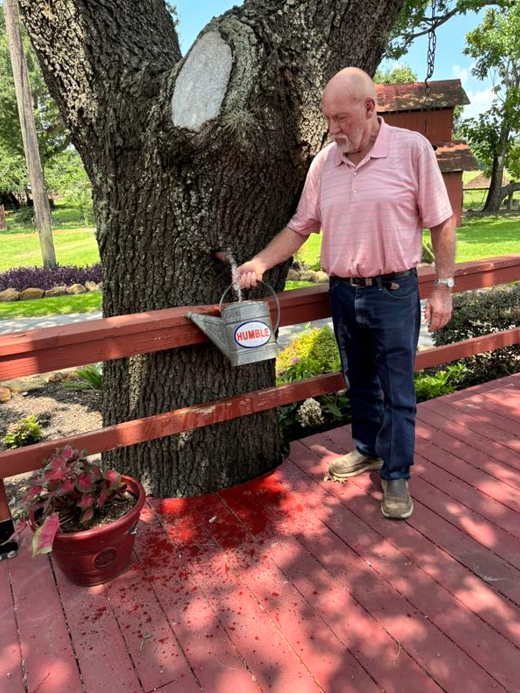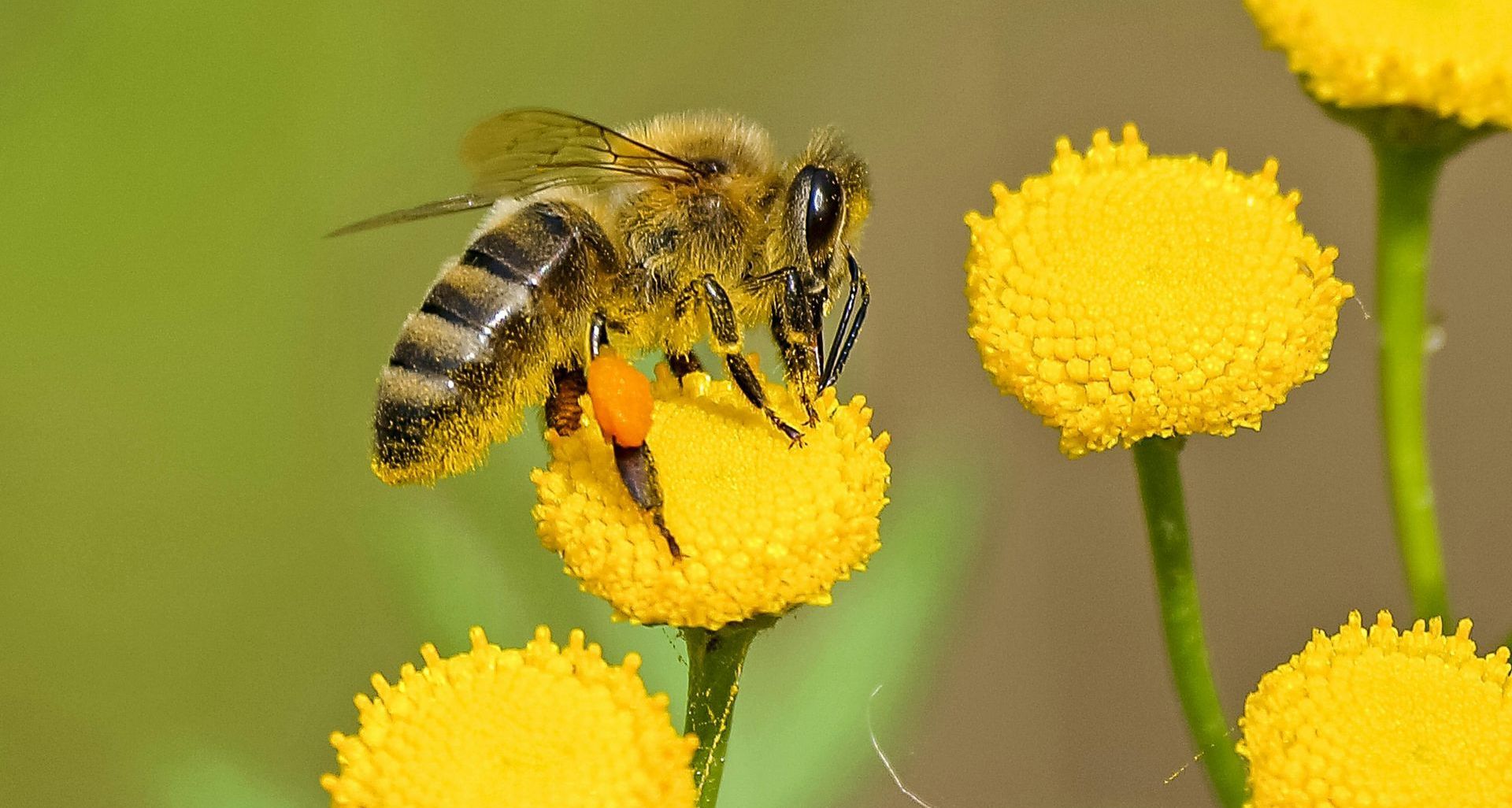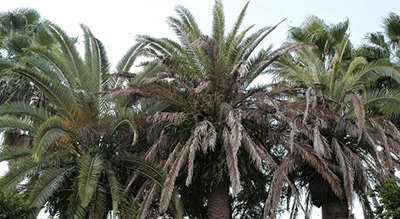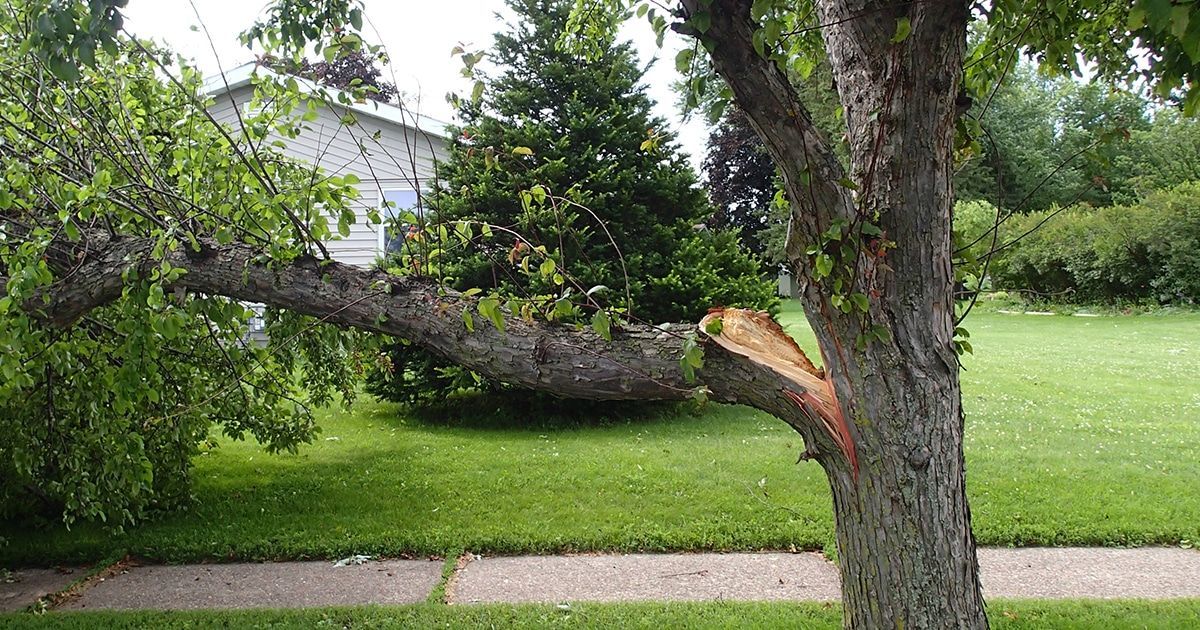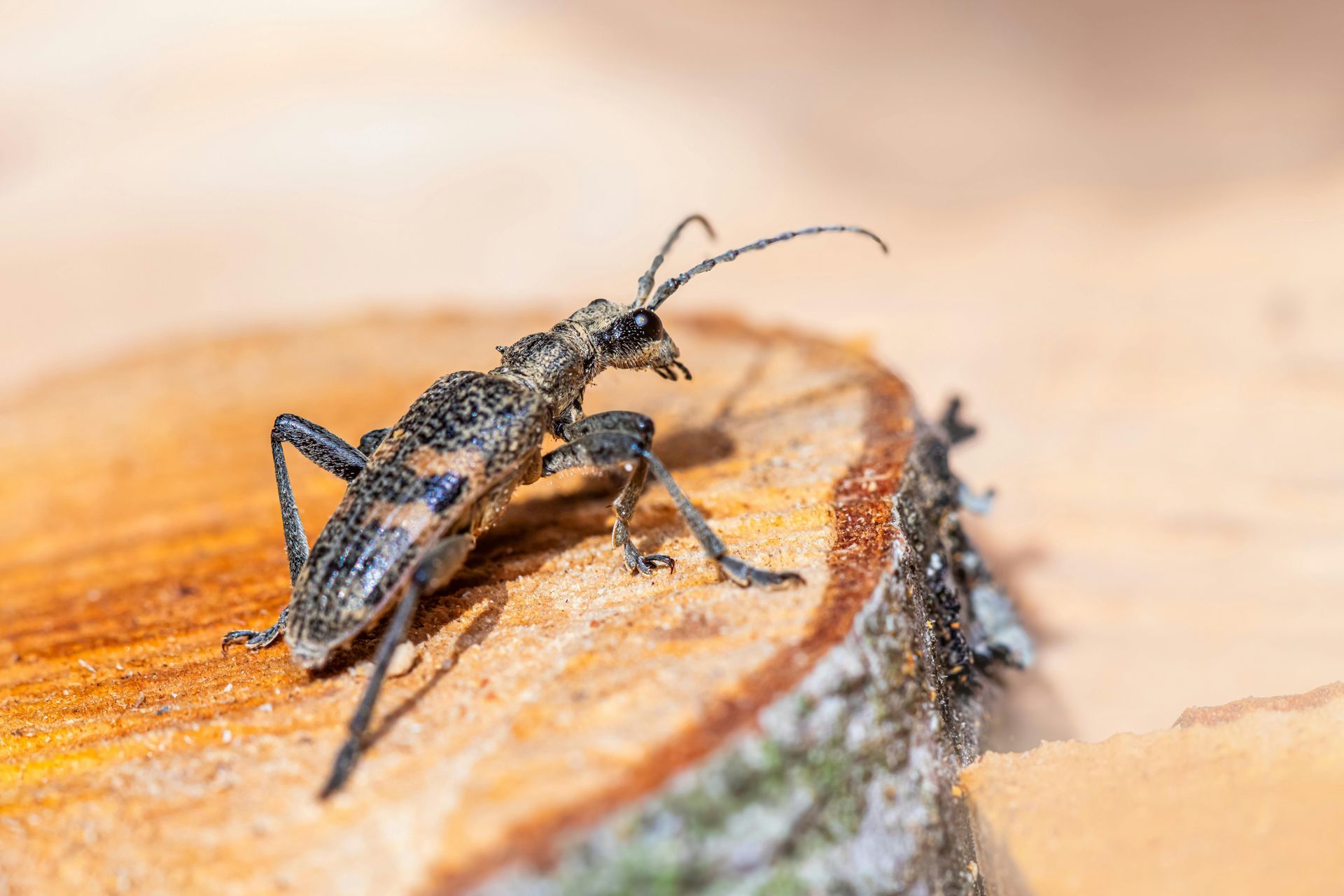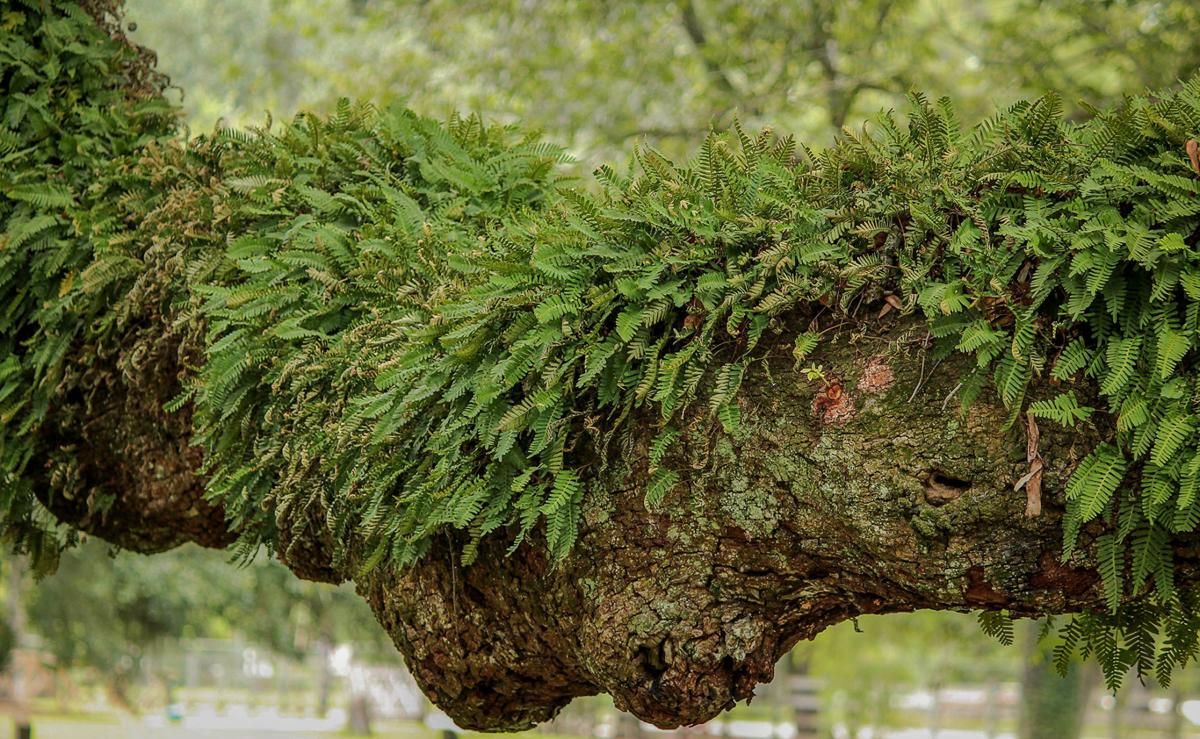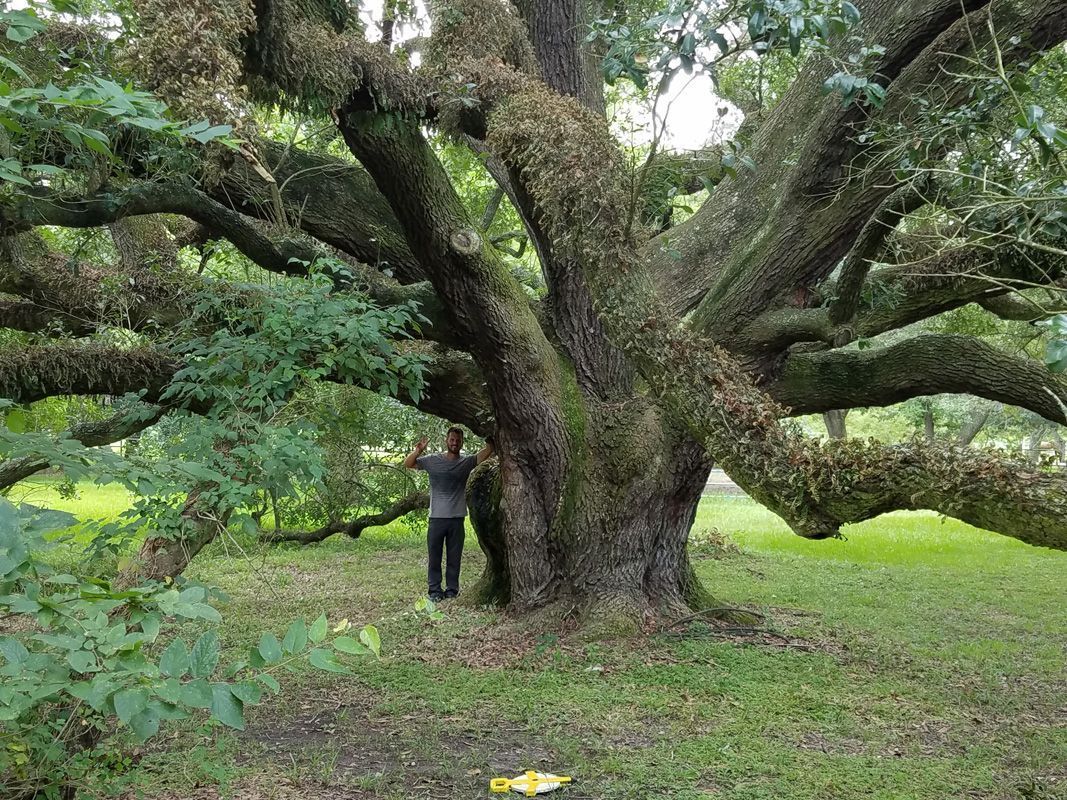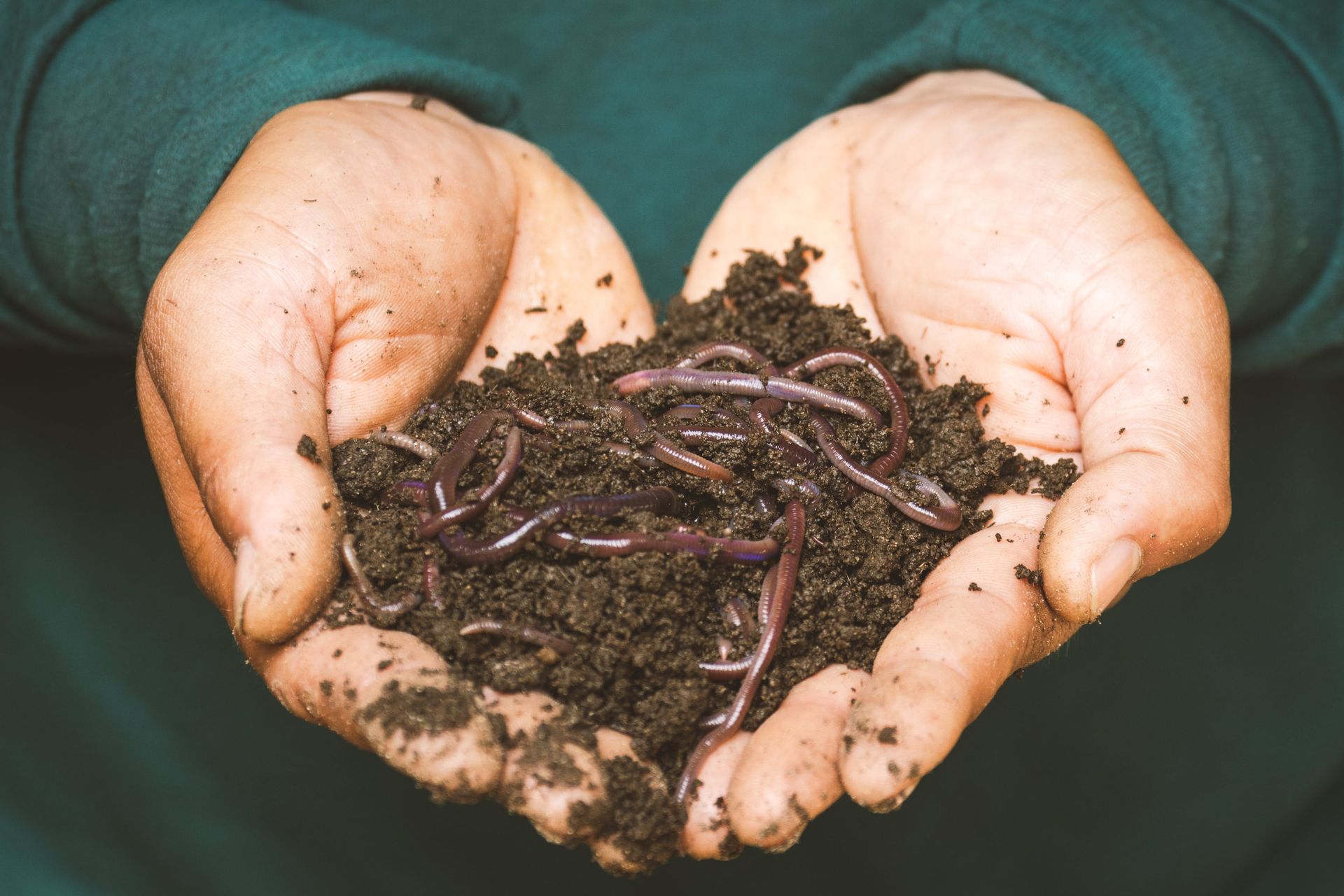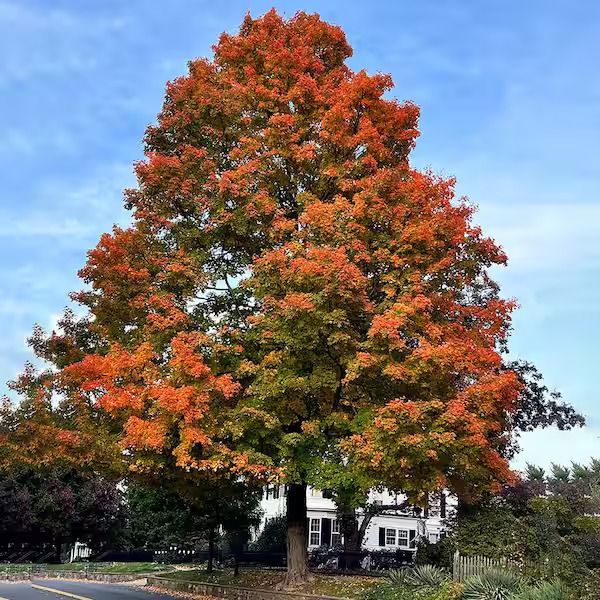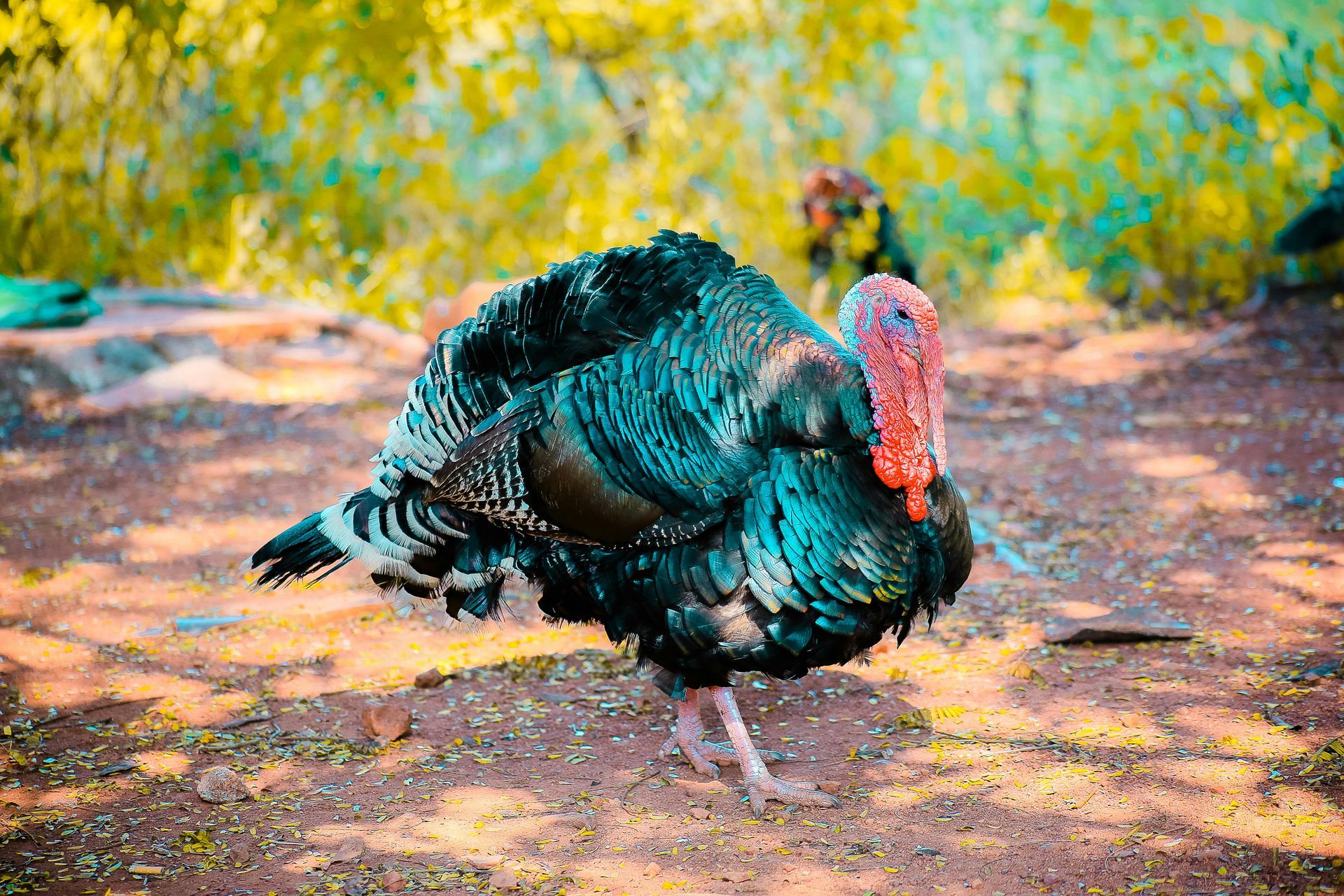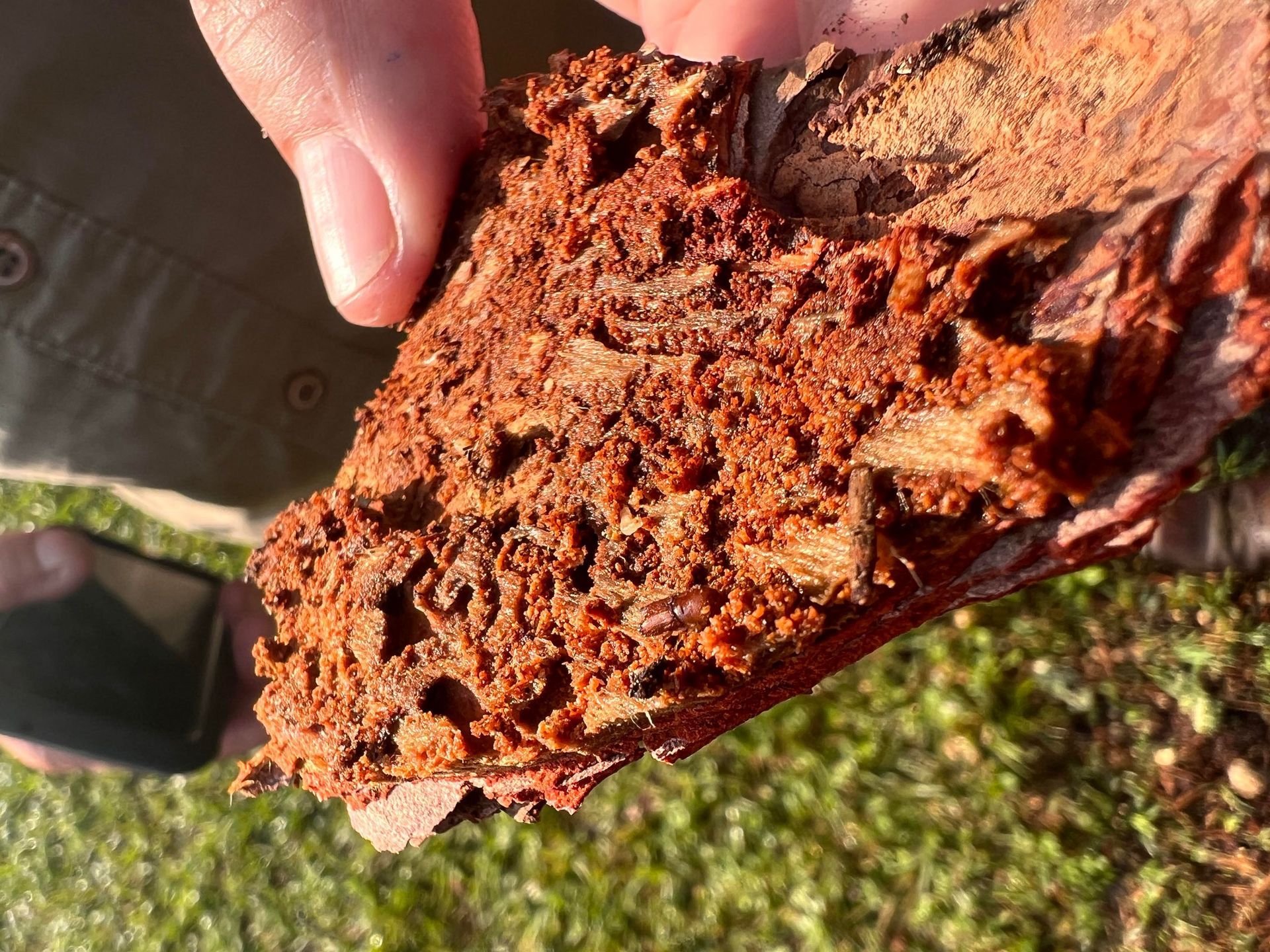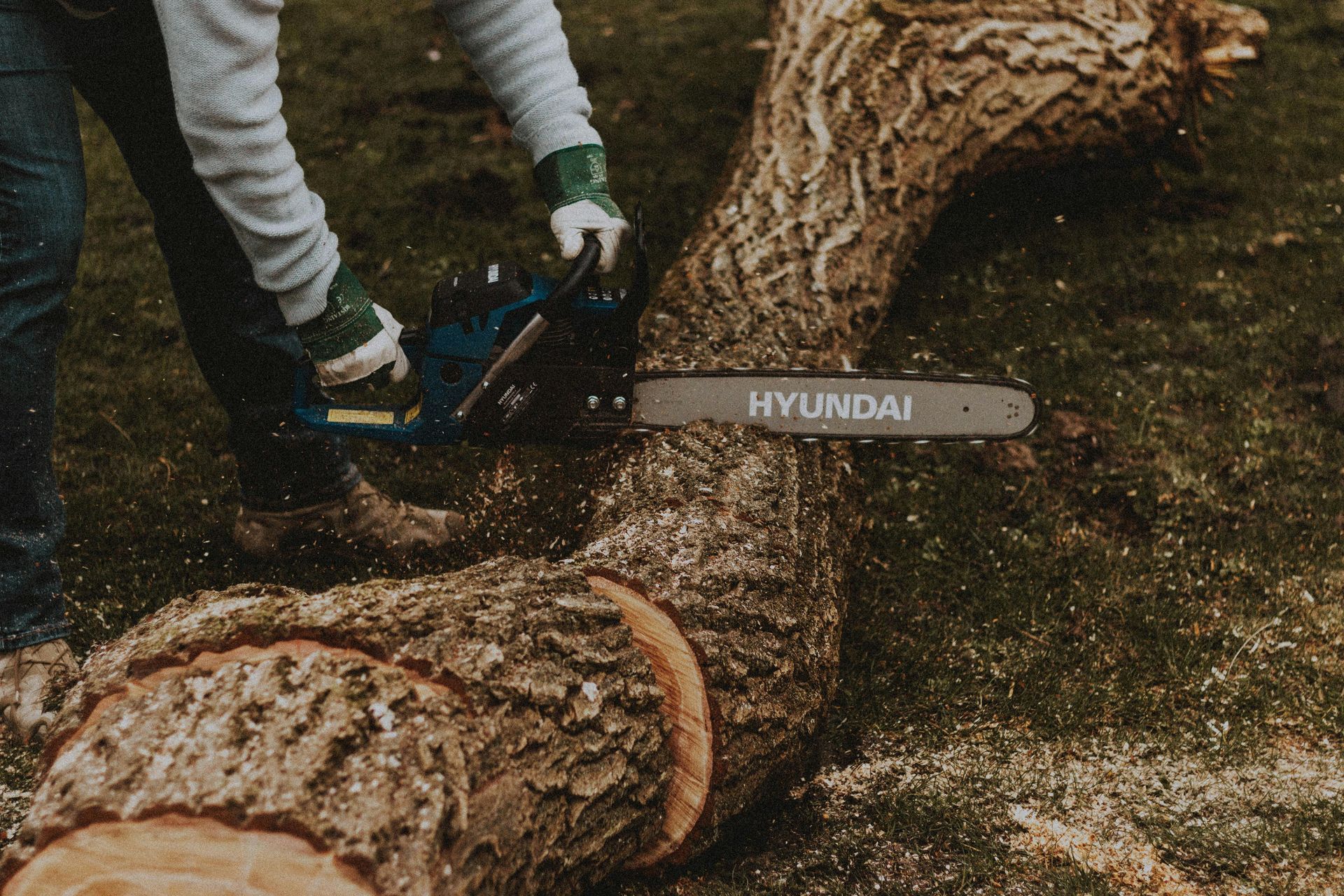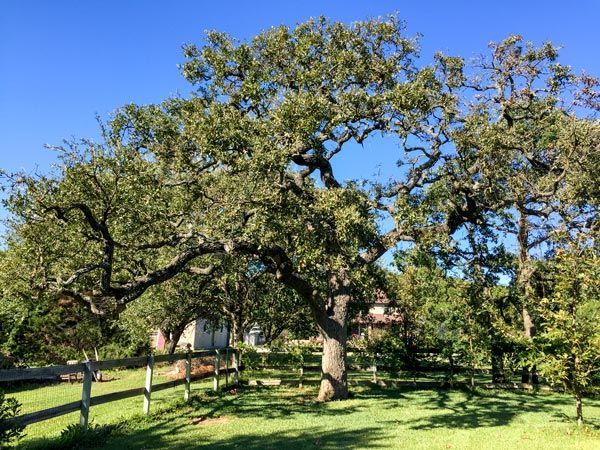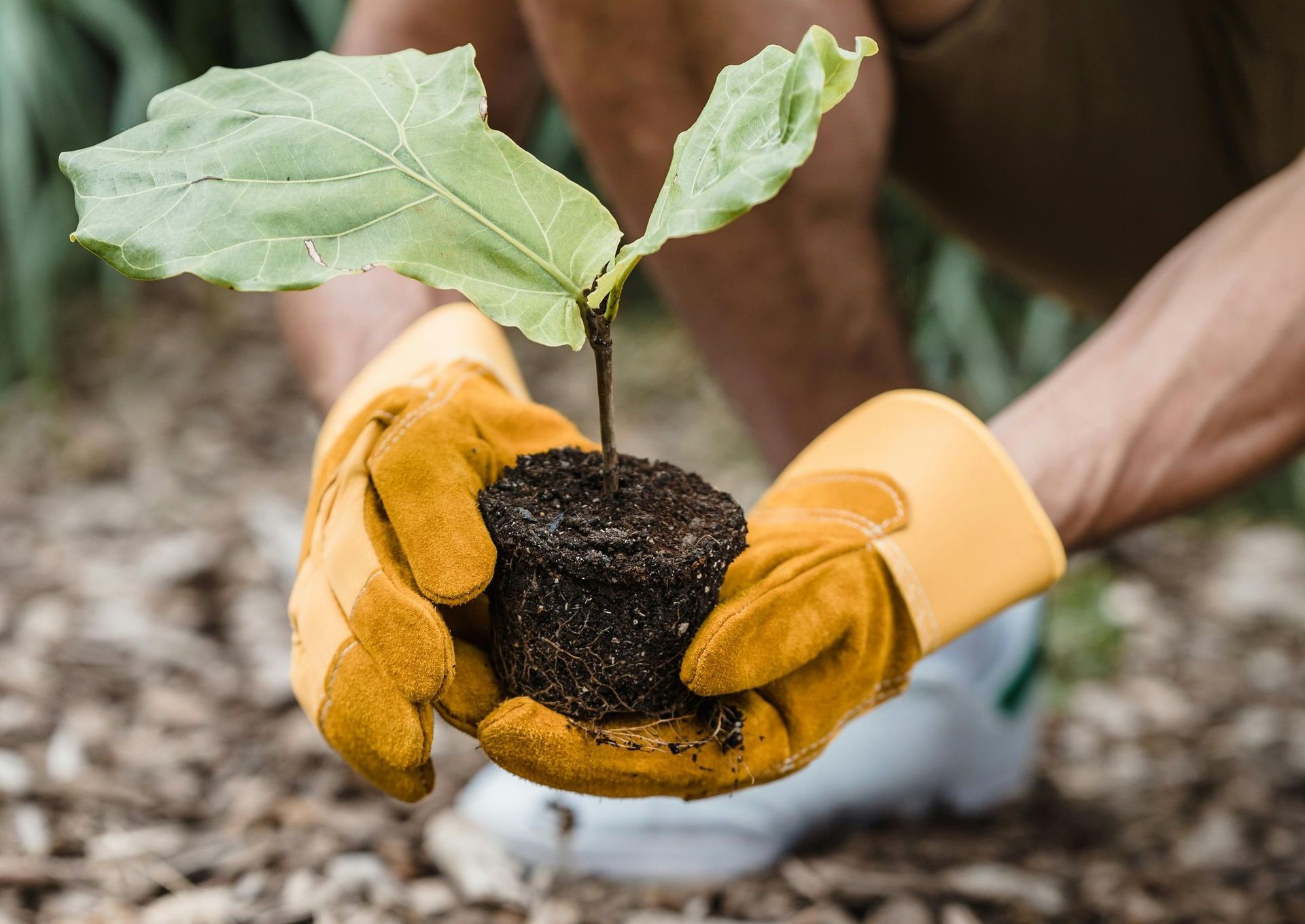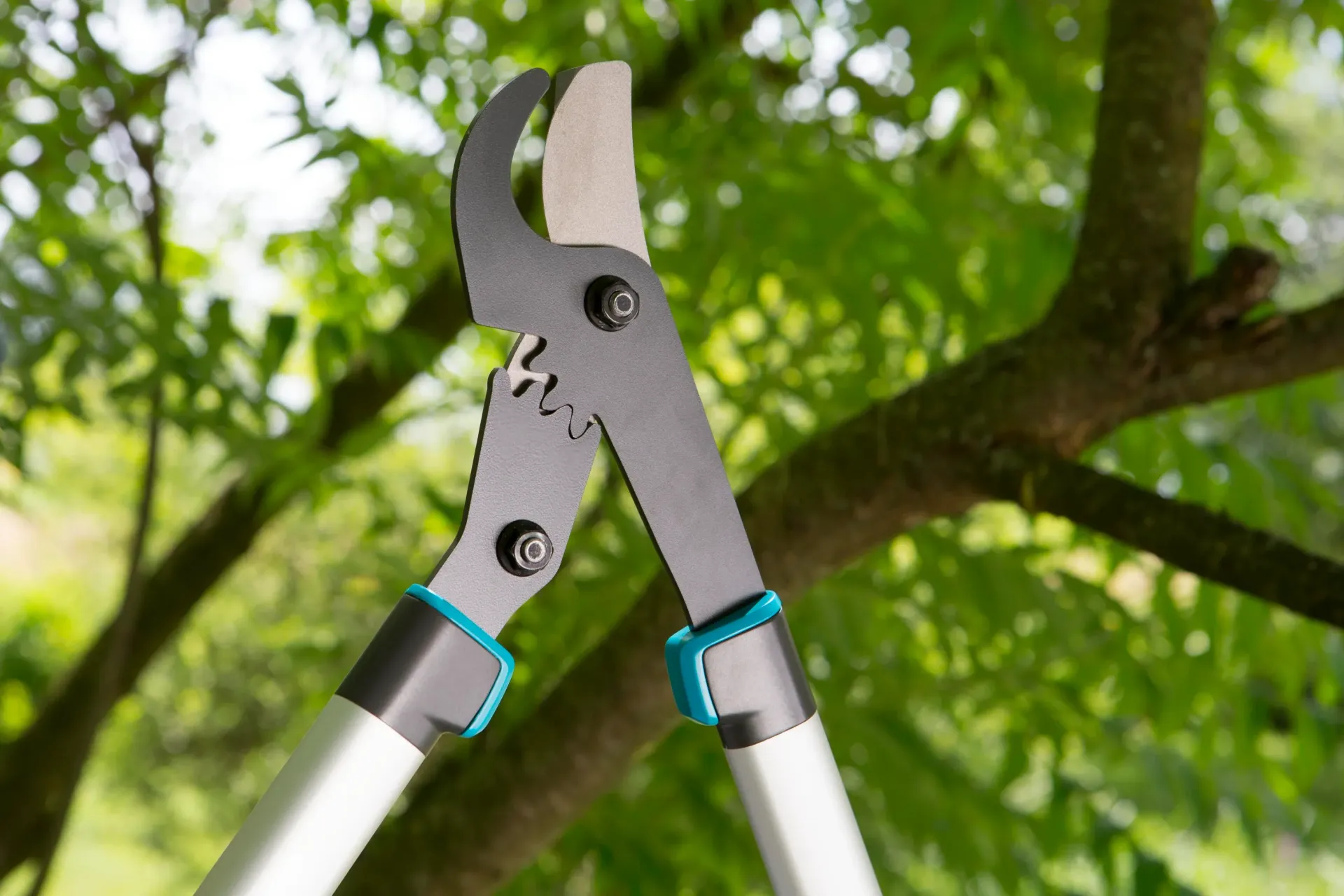Liriope’s Muse: Tree Care Tips from a Master Arborist
TRUSTED TREE CARE SERVICES SINCE 1970
Liriopes Muse: Tips For Summer: Keeping Your Trees Thriving in the Texas Heat
The dry and hot conditions of Houston’s summers are hard for even the most resilient of trees to survive, and they are only getting hotter. The following are 7 tips compiled by our Board Certified Master Arborist, Eric Putnam, that can help ensure your beloved trees stay healthy and thriving during Houston’s hot summer seasons, ensuring they continue to beautify your landscape for years to come!
1. Proper Watering/Irrigation: It is essential that your trees are receiving an adequate amount of water, especially during hot and dry periods. Unwatered soil not only can dry out the tree but it can cause the surrounding soils to become complex and compact, making nutrient and water absorption difficult. During these periods, deep waterings are key as they allow the moisture to penetrate the soil and reach the roots.
Eric recommends installing a simple timed irrigation system in your yard to ensure your trees are getting the water they need, when they need, without the hassle of having to stand out in the heat yourself. He also advises that you water your trees in the early morning and late in the evening to minimize evaporation. To learn more about how you can properly irrigate your yard this summer season, check out this article.
2. Light Trimmings: Removing dead, damaged, or diseased branches from your trees can promote healthy growth and reduce stress. The last thing you want to do in the summer is cause undue stress to your tree, so Eric recommends that you keep any tree trimming/pruning to a minimum. Making large or improper pruning cuts, especially during the summer, can cause great harm to your tree and even lead to its premature death.
3. Fertilization/Biostimulant Treatments: Consider fertilizing your trees in the early summer to provide them with the essential nutrients they need to promote growth and development. Biostimulants can be especially helpful to feed the surely dwindling microbiome.
Interested in a biostimulant? Contact us now!
4. Pest Prevention and Mitigation: Pests run rampant during the summer months, so it is important you regularly monitor your trees for any signs of borer beetles, scale, mites, aphids, worms, and spider mites and take the appropriate measures necessary to control any infestations. Summer is especially stressful on your trees, and stressed trees are highly susceptible to pest infestations, so if you suspect your tree may have pests you need to contact your local ISA Certified Arborist as they will be able to determine the proper treatment threshold and treatment plan best suited for your trees infestation. (Not all pest invasions need intervention)
5. Avoiding Unnecessary Soil Compaction: It is important to minimize foot traffic and the use of heavy machinery around the root zone of your trees to prevent any unnecessary soil compaction, as it can restrict the root growth and nutrient uptake which can in turn stress the tree.
Eric recommends, if at all possible, putting any unnecessary construction off until the cooler months as this can reduce any extra stress. However, he understands that not all construction is avoidable, so he advises installing a barrier or adding a layer of mulch around the critical root zone to minimize any compaction or severing of essential roots. To learn more about tree care during construction check out our blog here.
6. Proper Mulching: Mulching when done properly can be greatly beneficial to your tree. It can preserve the soils moisture and prevent evaporation, regulate the soils temperature, limit the growth of unwanted weeds, protect the soil by reducing erosion and soil compaction, and can provide the soil with important nutrients.
Put briefly, when mulching your tree you should begin by uprooting any unwanted weeds and apply a thin layer of mulch around the base of the tree spanning a minimum of 3 feet (or at least half the distance of the trees canopy) and a depth no greater than 3 inches. It is essential that the mulch does not directly touch the trunk (or base) of the tree and the mound should take on a donut-like shape rather than a mountain or volcano.
For a more in-depth explanation of the importance of proper mulching and how to accurately apply mulch to your trees without causing harm, check out this blog!
7. Practicing Proper Lawn Care: Be mindful of lawn maintenance activities such as applying herbicides, weed trimming and mowing, ground leveling, and sod installation, as these activities can damage the trees roots if done too close to the tree. (Consider leaving a buffer zone around your trees and avoid compacting the soil in their critical root zone)
Herbicides, while effective in controlling unwanted vegetation, can lead to systemic toxicity and pose significant health risks to your trees. Eric urges all customers to avoid using herbicides in their yard at all costs, but if you must use them it is critical that you spot treat only and keep all herbicides away from the base of the tree and from under the canopy of the tree to avoid contact with any essential roots.
Monitor for Signs of Stress: It is essential that you are keeping an eye out for all signs of stress during the scorching heat this summer. Some things to look out for are yellowing leaves, wilting leaves, leaves curling at the edges, dry and scorched foliage, Flagging leaves (leaves that have died but have stayed on the tree due to the lack of water sudden death), or premature leaf drop.
If you notice any signs of possible stress, it is critical you act immediately and contact your local ISA Certified Arborist for guidance as a trees physical symptoms are a delayed response to its stress and it may be more stressed than it appears. If you are located in the greater Houston area, Eric Putnam BCMA, Inc. is here to help! Contact us today, for our team of knowledgeable arborists are experienced in diagnosing and treating heat and drought related stress complications.
Commonly Asked Questions:
Eric has compiled the following list of commonly asked questions that he has been asked over the years to help you with any that you may have!
How far away from the trees trunk should I water?
It is important to note a tree’s root zone can span 2 – 3 times the radius of its canopy and often during times of severe drought, they can reach out up to 5 times the canopy’s radius. However the trees critical root zone is located just inside of the trees drip line, or the area at the canopy’s edge where the water falls to the ground after landing on a trees foliage.**
Keep in mind this will differ from tree to tree, and watering within this zone is the bare minimum to sustain your tree. If you want your tree to thrive during this especially dry season try watering past the drip line and at least double the radius of its canopy.
**Don’t know where your trees drip zone is located? Test it out! Observe your tree during the next rain or spray your tree’s canopy with a water hose and watch where the water falls.
How long does it take a tree to recover from drought injury?
The recovery time for a tree from drought injury can vary significantly depending on factors such as the severity of the drought, the tree species, its age, health, and environmental conditions following the drought period. In mild cases of drought stress, where the tree experiences temporary wilting or leaf loss, recovery may occur relatively quickly once adequate water becomes available again. However, in more severe cases where prolonged drought leads to extensive damage, such as dieback of branches or root loss, the recovery process may take several years or even decades.
During this time, the tree will allocate resources towards regenerating damaged tissues, replenishing its energy reserves, and strengthening its defenses against future stressors. Proper care and management, including supplemental watering, biostimulant treatments, and pruning to remove dead or damaged branches, can help support the tree's recovery and promote its long-term health and resilience. Consulting with an ISA Certified Arborist for guidance on post-drought tree care practices is recommended to facilitate the recovery process and minimize further stress to the tree.
Some of my trees and shrubs are looking dry and crispy, how can I tell which ones are ‘gonners’ and which ones will make a recovery?
Drought injury in trees can be sudden or can take up to 2 years to present itself. Eric’s best advice in determining whether a tree will make a recovery is to monitor your trees and “wait and see”. Trees cannot talk to us , so the best that we can do is look out for any signs that they may be presenting.
The quickest way to get an idea whether a tree is going to make it through the drought is by their leaf behavior. If the leaves are becoming crispy or yellowed and falling to the ground there’s a good chance that your tree is stressed but going to pull through. If the leaves are “flagging” or dying but staying on the branches, there’s a good chance that your tree may be severely damaged and may be a “gonner”. Leaf flagging occurs in severe cases of drought stress and is a sign of sudden death.
If you notice any signs of drought stress on your tree, water, water, WATER!! And always wait until next spring before taking any removal action as the tree may still be alive, just dormant.
How can I keep my trees and plants from dying during Texas’ drought season?
Making sure you plant zone-relevant trees is one way you can ensure their survival during Texas’ grueling summers. For example, planting a tree that is native to the cool mountain tops of Washington cannot be expected to thrive in the tropical Florida environment.
Another sure way to ensure your tree's survival is to keep it hydrated! You can do so by administering daily deep waterings, setting up an irrigation system, or providing proper mulching.
To learn more about zones, and the importance of planting zone-relevant trees, check out this blog!
Do you have any questions still unanswered? Email us at Ericputnambcma@gmail.com to speak with an arborist!
Liriope’s Muse - Expert Tree Care Tips
